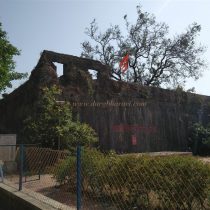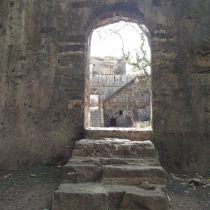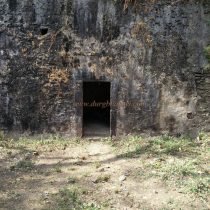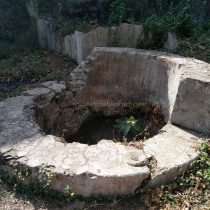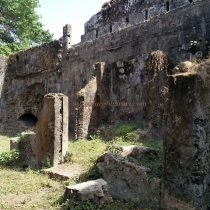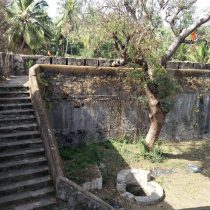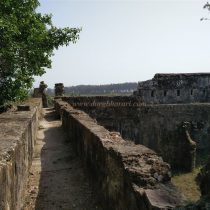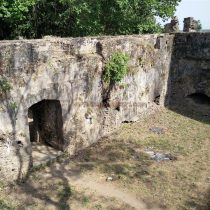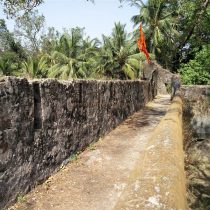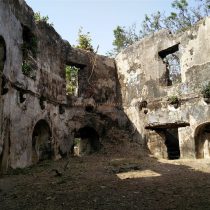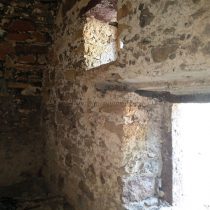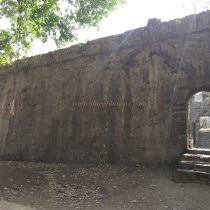KELVE MAHIM
TYPE : COASTAL FORT
DISTRICR : PALGHAR
HEIGHT : 0
GRADE : EASY
Kelve beach on the Western Railway is famous among Mumbaikars. Mahim village is 10 km away from Kelve or Palghar station by rickshaw or ST. Mahim fort is behind the government hospital in Mahim. There is a temple of Goddess Mahikavati in this village and the name Mahim is derived from this goddess. Mahim Fort is bordered by the sea to the west and Mahim Bay to the south. In ancient times, seawater flooded the fort, at that time the size of the fort was very large. The water of the creek protected the fort from the west. The present fort is a citadel and that is the only remains of the fort. Outside the fort, there is a small garden for children to play in and a temple of Goddess Bhavani. From the outside, the fort looks like a ship.
...
The total area of the fort should be about 1 acre. Its ramparts are made of stone and clay. Upon entering the fort through the east-facing entrance, on the left are the remains of a ruined structure, and on the right is a room in the fort. There is a beautiful staircase in front of the entrance. On the way to this staircase there was a dry well on the right-hand side but Nikhil Suri with the guidance of representative of ‘Kille Vasai Mohim’ Dr. Shridatta Raut, with the help of the locals, has removed the sludge from the well and cleaned the water in it to make it drinkable. Conservation work of this fort is underway by ‘Kille Vasai Mohim’. After climbing the stairs, we reach the curtain wall. From there you can walk around the fort. There is another entrance at the end of the stairs. After crossing it, we enter the Pentagonal area at the back of the fort. There are many barrages in the ramparts in this area. They were used for surveillance and for keeping cannons. The history of the fort is that the original name of Kelve Mahim was Matsyamat, followed by Mahikavati and later Mahim. In ancient times, King PratapBimb established his kingdom on the coast from Daman to Walkeshwar in the 13th century and chose Mahikavati as his capital. The original fort of Mahim was built during the same period. Later the fort was captured by Sardar Bhimrao. In the 14th century, the fort came under the control of the Sultan of Gujarat. In 1534, the fort was conquered by the Portuguese and repaired and strengthened. In 1612, the Mughals made an unsuccessful attempt to conquer it. A reference to the fort dates back to 1632 in Portuguese documents. The fort is said to have an officer, ten soldiers, an inspector, four orderlies, ten black soldiers, and a helper. Chhatrapati Sambhaji Maharaj had attacked Mahim in 1684, but the fort was not captured as the Marathas did not have enough time to lay siege. In 1737, the Marathas laid siege to Mahim fort. At that time a great battle took place between the Marathas and the Portuguese. The number of Marathas was small, in which Ramchandrapant was shot in the hand and many Marathas were killed. On January 9, 1739, under the leadership of Chimaji Appa, Pilaji Jadhav, and Shankaraji Pant, Mahim was besieged with the help of 8,000 cavalries, 6,000 soldiers, and 12 cannons. He fired cannons at the walls of the fort, scattering them everywhere. Finally, on January 20, 1739, the fort came under the control of the Marathas and the Portuguese left the area permanently. This fort remained with the Marathas till 1818, until it was conquered by the British. Till 1862, there was a bungalow of the District Collector of Thane. The fort gained importance due to trade between Mahim and Kelve areas. Half an hour is enough to explore the entire fort.
© Suresh Nimbalkar

